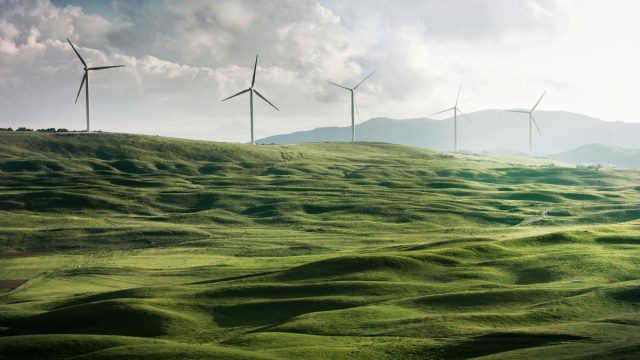Energy procurement is a topic that can often be confusing. Yet, whether you’re a homeowner or running a business, understanding how we secure our electricity is no longer an optional endeavor. Shake off that slight confusion because we’re plunging headfirst into the latest trends and why they matter.
Energy as a Political Pawn
Contents [show]
Nobody expected energy to be the political pawn it is today, jostling for position with world economies and international relations. Suppliers and consumers are stuck in a game of solar-powered chess. Western GPS goes haywire every time oil prices spiral. Energy isn’t just at the heart of political tit-for-tat; it’s become the whole game board.
With global demands constantly pushing the boundaries, countries have become increasingly locked in negotiations with key energy partners. The ripple effects of geopolitical tension aren’t just hypothetical—they’re materializing in our energy bills. As doors close on easy trading paths due to international disputes, the quest for stable energy feeds remains a convoluted journey.
Regional Boogeymen
Regional suppliers have suddenly become the boogeymen of energy procurement. Local solutions are popping up to sidestep the headache-inducing monopolies. Where you get your energy increasingly depends on what your corner of the world deems important. Want Germany’s approach to wind or Texas’s fixation with “clean” coal? Choose your path wisely—or risk ending up with a shocking bill.
For those investigating regional energy market strategies, you might explore https://texaselectricbroker.com, which offers insights into securing competitive electricity rates through comprehensive brokerage techniques.
Often, the burden falls on municipalities and counties experiencing the brunt of energy shortages, giving rise to community-based energy councils. This decentralized approach allows regional societies to take energy arrangements into their own hands, fostering a symbiotic relationship between local businesses and renewable initiatives, albeit fraught with red tape and resource constraints.
Greening Energy Supplies
Everyone’s talking about going green, but let’s be brutally honest: governments and industries love to drag their feet. We’ve all heard them make grandiose promises about renewable energy feeds and net-zero carbon targets. The wheels are turning, but are they moving at a snail’s pace or a speed-of-light sprint? Depends on who you ask.
Public pressure grows for genuine accountability as environmental consequences become glaringly apparent. Given the rich tapestry of ecosystems put at risk by outdated methods, citizens demand that industries do more than simply promise—they want a clear timeline and measurable results. Renewable strategies are scrutinized closely, making the push for transparent progress more compelling than ever.
Social Awareness Push
Your average citizen is wising up and demanding transparency from their energy suppliers. Who knew the public would grow a conscience? Whether it’s protesting fossil fuels or advocating for solar subsidies, social movements are injecting a jolt of awareness into the system like never before. It’s thrilling—and a bit unsettling—the power people wield when united.
Decentralized Networks
Enter the era of decentralized energy sources. Think solar panels on your neighbor’s roof, backyard wind turbines, and those rare, lucky folks enjoying biogas. The power is now, quite literally, in the hands of every Jane, Jill, and Joe. It sounds empowering, but let’s face it: it’s also a logistical nightmare. Who’s in charge when everyone feels they’re the boss of their personal wattage?
The complexities of decentralized networks stir a cascade of questions concerning energy liability and shared infrastructure. Communities must ponder how to collaborate efficiently, with questions around grid capability and safety at the forefront of discussions. Such collaborations require rigorous planning but they hold out the promise of less bureaucratic nightmares and more local accountability.
Technological Advances—But Not Too Smart
Tech advancements: everyone’s friend and foe in energy management. Smart grids, digital meters, and data analytics are more commonplace than that weird cousin at a family reunion. On one hand, these tools help manage demand and minimize waste. On the other, let’s not get too excited—most of us are still waiting for our district to get a sniff of these miraculous gadgets.
Consumer Choice—A Halfhearted Gift
Oh, the illusion of choice. You’re told you have options, yet the market feels about as diverse as an all-you-can-eat salad bar with only iceberg lettuce. With contracts that read like a Shakespearean play and pricing plans more complex than Sudoku, consumer-friendly intention doesn’t always translate to consumer-friendly execution.
The overwhelming nature of navigating energy contracts often leaves consumers feeling more confused than empowered by their choices. As regulatory bodies attempt to optimize complex options, the need for clear, digestible information becomes more apparent. Until then, consumers continue to grapple with understanding their own energy usage and the true value of their contracts.
Conclusion
Energy procurement is a tug-of-war between politics, nature, and technology. Each trend—boasting its own merits and pitfalls—leaves us wondering who is really pulling the strings. There is a bitter humor in it all. So, whether you’re glued to the understory of this or skimming headlines, learning about energy procurement is key. Otherwise, you might just find yourself in the dark, quite literally.


